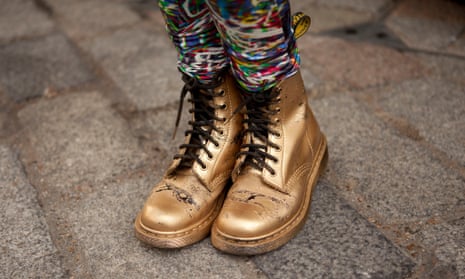A few weeks ago I stood in the middle of a store filled with glass and gleaming chrome, and I fell in love.
It wasn’t a man this time, it was a sleek cream trench coat with black buttons and perfect epaulets. The way it cinched at the waist was like seeing God. I wanted it. And more than that, I wanted the person I’d become if I had it. Standing there looking in the mirror I just knew that the woman in this coat was calm and organized. She’d get up at 7am every day, meditate, never miss deadlines and wouldn’t dream of calling popcorn a meal.
I wanted it so badly I could taste it, but I didn’t need it. And because I didn’t need it, after taking a shameless selfie, I said goodbye.
For all my talk of overconsumption, I don’t hate shopping, I love it. I used to do a lot of it. It’s thrilling and enticing and it makes me feel good.
But somewhere along the line, the balance tipped. The thrill wasn’t enough to outweigh the costs. The enticements wore thin as I educated myself about manufacturing practices and environmental impacts. It didn’t make me feel good anymore. So I stopped.
But even humourless ascetics like me have to buy things eventually (you know how it is when your only spoon breaks and you don’t have time to whittle another one, or when your kid outgrows her burlap, again?), so I created four questions to help me shop more consciously.
- Do I need this?
- Can I make it?
- Can I buy it secondhand?
- Is this the best quality I can afford?
For minimalists and those who choose to live with less, the goal is rarely a life without possessions at all, spartan and devoid of all comfort or beauty. Not only is that impossible, it sounds quite unpleasant.
No, the goal is simply shifting to a more conscious mode of consumption. I’ve written before about needs v wants, the empowering feeling of making things for yourself, and secondhand shopping. Let’s take a look at the fourth question: is this the best quality I can afford?
These words run contrary to the entirety of our culture, structured around bargain hunting and getting more for less. Finding deals. Shopping sales. Black Friday. This constant emphasis on quantity over quality has helped to create consumer goods which embody the principle of planned obsolescence. Our purchases wear out too quickly, are constantly being replaced with new models or more current trends, or simply break with no option to fix them – and then it’s back to the mall we go.
This isn’t accidental. Most products simply aren’t built for the long haul and when they are, their higher costs serve as powerful deterrents for consumers. It’s the ultimate mind game: we’d rather pay $10 for something and have to replace it every year, than pay $50 and have it last for five.
It took me a long time to realize that cheap is usually more expensive in the long run. Buying something once, and buying it well meant that I was making an investment instead of just a purchase. The $60 boots I loved because they were such a great deal looked worn, scuffed and threadbare after just a few months, and needed replacing after a year. When I finally spent $200 on a pair of good leather boots, however, they lasted me over four years and still look great.
As for my fourth point, Is this the best quality I can afford?, choosing quality doesn’t mean you spend beyond your budget, nor bankrupt yourself. What you can afford will differ person to person, but whatever your budget, shopping secondhand is a fantastic way to stretch it and get the quality you’re looking for at less than half the cost of buying new.
As for what to buy with this rule in mind – ideally, everything. But, perhaps you can help me whittle it down to a list of things on which it always pays off to spend a little extra. In my books, coats and footwear top the list. I can do without fancy socks or T-shirts, but I have always regretted cheap shoes, and in Canada skimping on a warm, well-made coat means you’re in for a miserable winter.
So, socks? Pens? Furniture? Sex toys? Where are those extra dollars always well spent? Where does quality matter most, to you? I’m all ears.

Comments (…)
Sign in or create your Guardian account to join the discussion